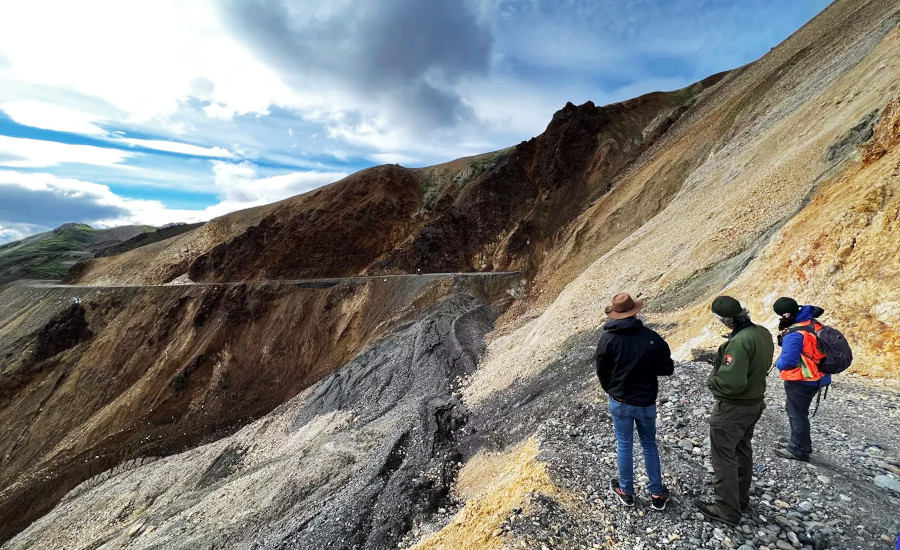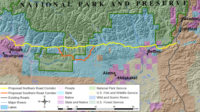Landslides don't have to move fast to be powerful.
In Denali National Park in Alaska, the 300-ft-wide Pretty Rocks landslide located at about Mile 45.4 of the Park Road, has been active for decades, moving just inches per year. Yet over recent years, the rate of debris acceleration has increased so dramatically that the National Park Service had to close the roadway in August 2021, cutting off access to the western half of the popular park.
Earlier this month, the Federal Highway Administration awarded Granite Construction Inc. a $100-million contract that includes construction of a bridge bypassing the landslide to restore park access. The Polychrome Area Improvements project will also include repairs and upgrades to 47 miles of the road beyond Pretty Rocks, where other landslides have occurred.
The firm is working with the agency to assist in producing "a constructible design," said Granite project executive Todd Keller in a statement.Work is scheduled to begin later this year and be completed in 2025.
Officials at the National Park Service say the Pretty Rocks landslide is actually a rock glacier—containing much more rocky debris than ice in the pore spaces. The substrate is made up of ice-rich permafrost that has deteriorated, with warmer temperatures and heavier rainfalls causing the slide to accelerate.
Officials at Denali noticed the landslide pace speeding up after 2014. While it had been moving just inches per year, within five years, it was moving at the rate of inches per day. Maintenance efforts included an emergency contract in 2020 to place about 5,000 cu yd of fill and aggregate in the landslide area to restore the road.
A year later the debris rate of flow was up to 12 in. per day. forcing park officials to close the road.
The solution will be construction of an approximately 475-ft-long single-span steel truss bridge across the area of the landslide. Supporting the bridge and improving ground conditions is a combination of earthwork, micropiles, rock anchors, precast concrete abutments, and thermosiphons that will be used to maintain existing permafrost in a frozen state.
Granite says the thermosiphon devices will keep permafrost in its frozen state during the construction process. The U.S. Army Corps of Engineers has used the systems to stabilize permafrost since 1960 and their design has advanced through the years.
The new bridge also will need “realignment of the Park Road and a significant amount of excavation at either end of the bridge,” FHWA said.
The remote project site also adds to the complex nature of the project, said Derek Betts, Granite vice president of regional operations, in a press release.
“Logistics play a prominent role in the construction of this project, with materials handling, worker camp establishment, park restrictions on travel times, and the remote location all contributing to the complexity of the work,” he said.
The project is using the CM/GC delivery method, which engages the contractor early in the design process for constructability input.
Work also will involve a combination of earthwork, horizontal drains, and a possible cut slope side retaining wall hat likely will be needed to address the Perlite landslide on the east side of the Pretty Rocks slide.
"Minimizing our impact on park operations and preserving the natural beauty of the site is of utmost priority" during construction, Keller said.



